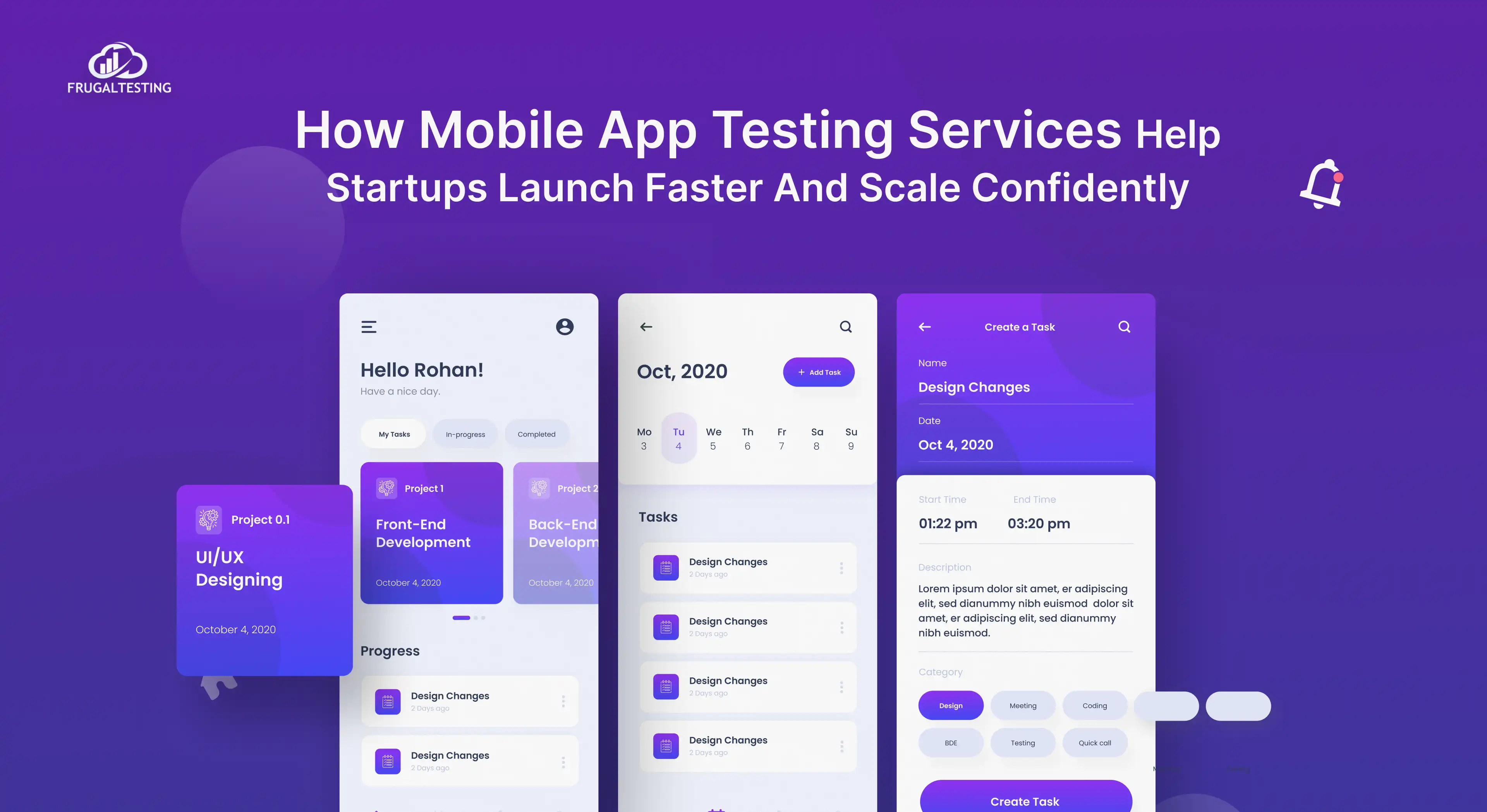In the current market scenario, businesses strive to deliver high-quality software products that not only meet customer expectations but also adhere to stringent software quality assurance standards. With growing competition, companies are forced to choose between using freelance software testers and outsourcing QA functions. As we are in the year 2025, this decision is becoming increasingly complex, balancing factors such as cost, flexibility, and project requirements. Whether you’re a quality assurance engineer or a member of a dynamic development team, understanding the trade-offs in software testing approaches is crucial for ensuring software quality and project success.
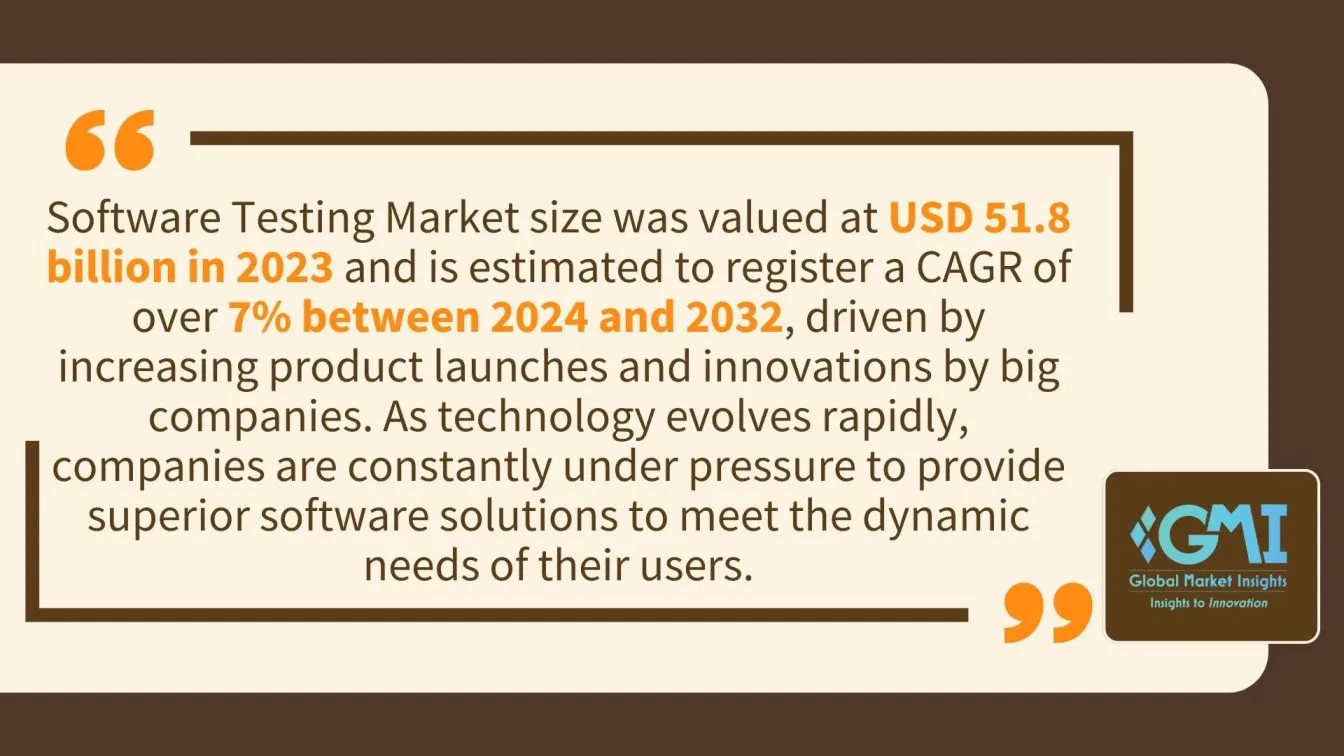
In this blog, we explore the spectrum of testing methodologies, discuss the significance of quality assurance services versus quality control, and examine the role of freelance work in modern software testing. We’ll also highlight essential tools, techniques, and insights into AI in software testing that can empower your organization to deliver quality products.
What will you learn from this blog?
📌 Understand the pros and cons of freelance testers vs. outsourced QA
📌 Learn essential software testing types and methodologies
📌 Gain insights on optimal testing timing and cost-effective budgeting
📌 Discover key automated, manual, and API testing tools
📌 Compare in-house QA development with outsourcing options
📌 Stay updated on trends like AI in software testing
Essential Software Testing Types for Comprehensive Quality Assurance
Software testing is a multifaceted discipline that covers numerous types of software testing. Whether you’re involved in application testing or Mobile Testing, incorporating a diverse range of testing methods is key to maintaining code quality and high user satisfaction. By embracing a comprehensive strategy, companies can streamline their development process and meet the standards set by quality assurance analysts and quality assurance testers.
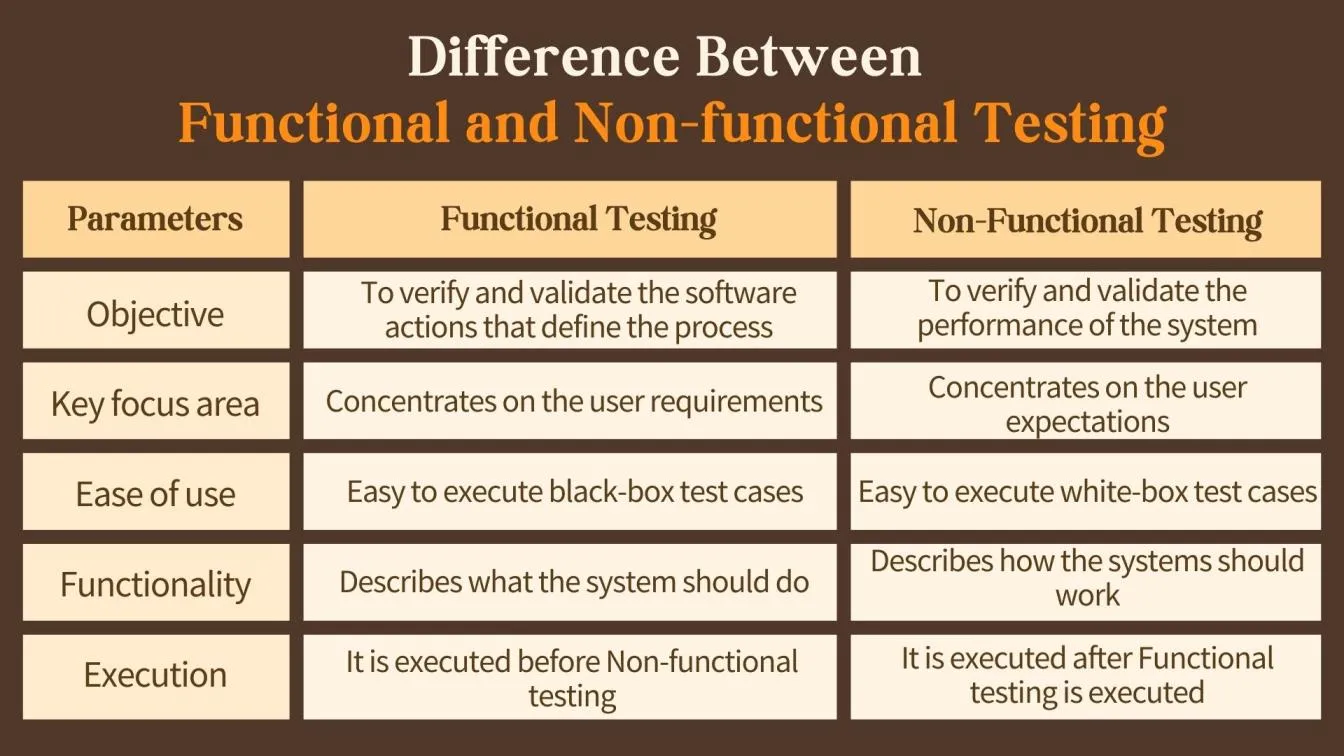
Functional Testing and Acceptance Testing: Functional testing verifies that each feature in your software performs as expected. This includes acceptance testing, where actual users evaluate the user interfaces and overall functionality to ensure that the end product aligns with the project scope. Incorporating quality assurance practices in this phase is essential for achieving project success and delivering quality products.
Non-Functional Testing: Non-functional testing goes beyond verifying core functionalities—it covers load testing, performance testing, and security measures. With the rise of mobile apps and complex systems, testing under real-world conditions is crucial. Techniques such as load testing help simulate heavy usage, while security tests ensure that robust security measures protect sensitive data. Advanced automation tools and even AI in software testing are being deployed to handle these sophisticated testing scenarios.
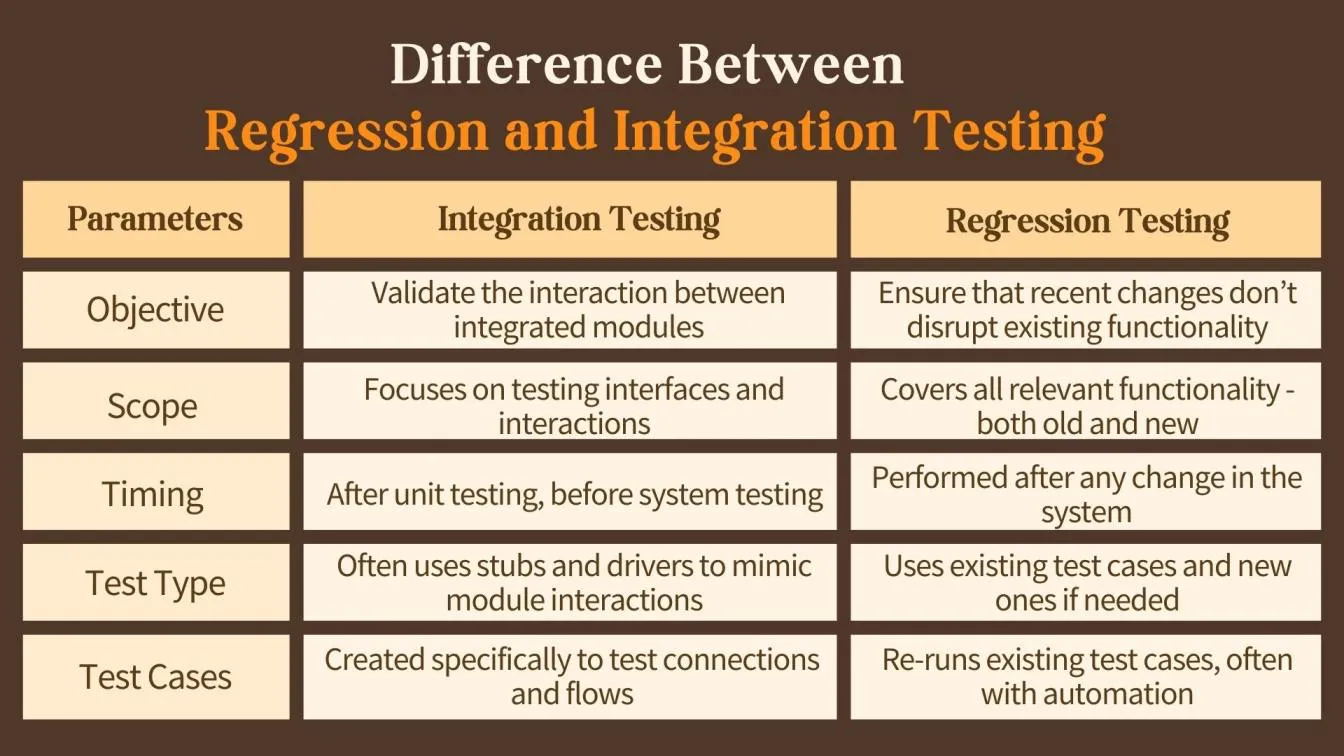
Regression and Integration Testing: Whenever a new feature is added or a bug is fixed, regression testing is essential to ensure that existing functionalities remain unaffected. This type of testing, paired with thorough integration testing, ensures that all parts of your system—from operating systems to user interfaces—work seamlessly together. By embedding these practices into your software development life cycle, companies can consistently uphold software quality.
Determining the Optimal Timing for Software Testing
The effectiveness of software testing largely depends on its timing within the software development lifecycle. Strategically placing testing phases can prevent hidden costs and contribute to overall project success.

Early Testing in the Development Process
Implementing testing early in the development process—often referred to as shift-left testing—allows your development team to identify and fix issues before they escalate. This proactive strategy not only enhances code quality but also helps in managing hidden costs by mitigating risks at the outset. Whether your team uses quality assurance services or leverages freelance expertise, early testing is essential for setting a strong foundation.
Continuous Testing for Long-Term Projects
Adopting continuous testing practices is increasingly vital for long-term projects. In today’s agile environments, continuous testing is integrated into the workflow, ensuring that every update is validated immediately. This ongoing evaluation is particularly beneficial for software development companies that need to balance software quality with rapid deployment cycles. Detailed bug reports and detailed reports generated continuously provide invaluable insights that drive improvements and bolster project success.
Post-Release Testing and Mobile Testing
Even after software deployment, testing remains a critical activity. Post-release testing—especially for mobile apps and dynamic user interfaces—ensures that your software continues to perform reliably in the real world. With organizations increasingly relying on software testing services provided by reputable software testing companies, ongoing monitoring helps capture user feedback and identify areas for further improvement.
Budgeting and Investment Strategies for Effective Software Testing
Investing in robust quality assurance and software testing is not merely a cost but a strategic investment in your company's future. Whether you opt for an in-house approach or collaborate with external experts, balancing your budget with the need for high software quality is crucial.
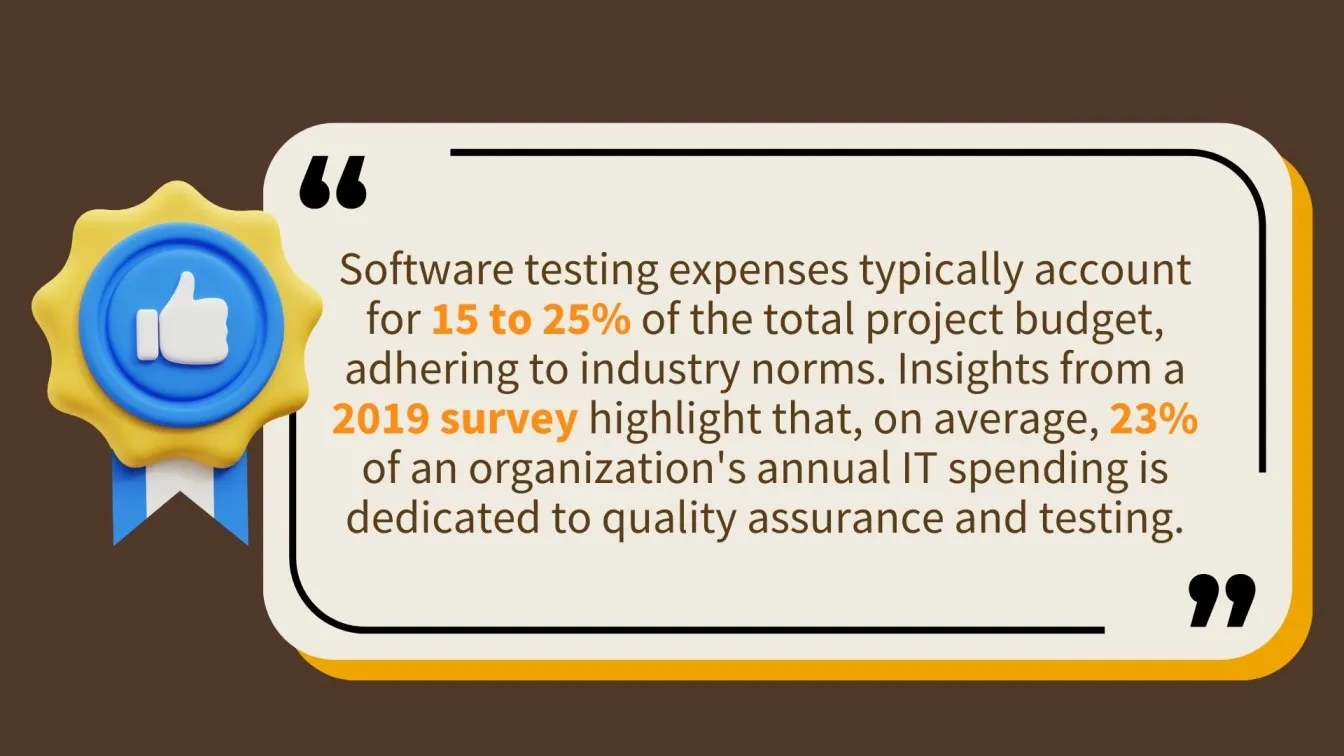
Assessing the Scope and Hidden Costs: Before finalizing your testing strategy, it’s essential to assess the full scope of your project. This evaluation includes determining the project scope and identifying any potential hidden costs that might arise during the testing phase. Understanding these factors early on can help you optimize your resources, whether you're hiring a dedicated team or engaging in online freelance work.
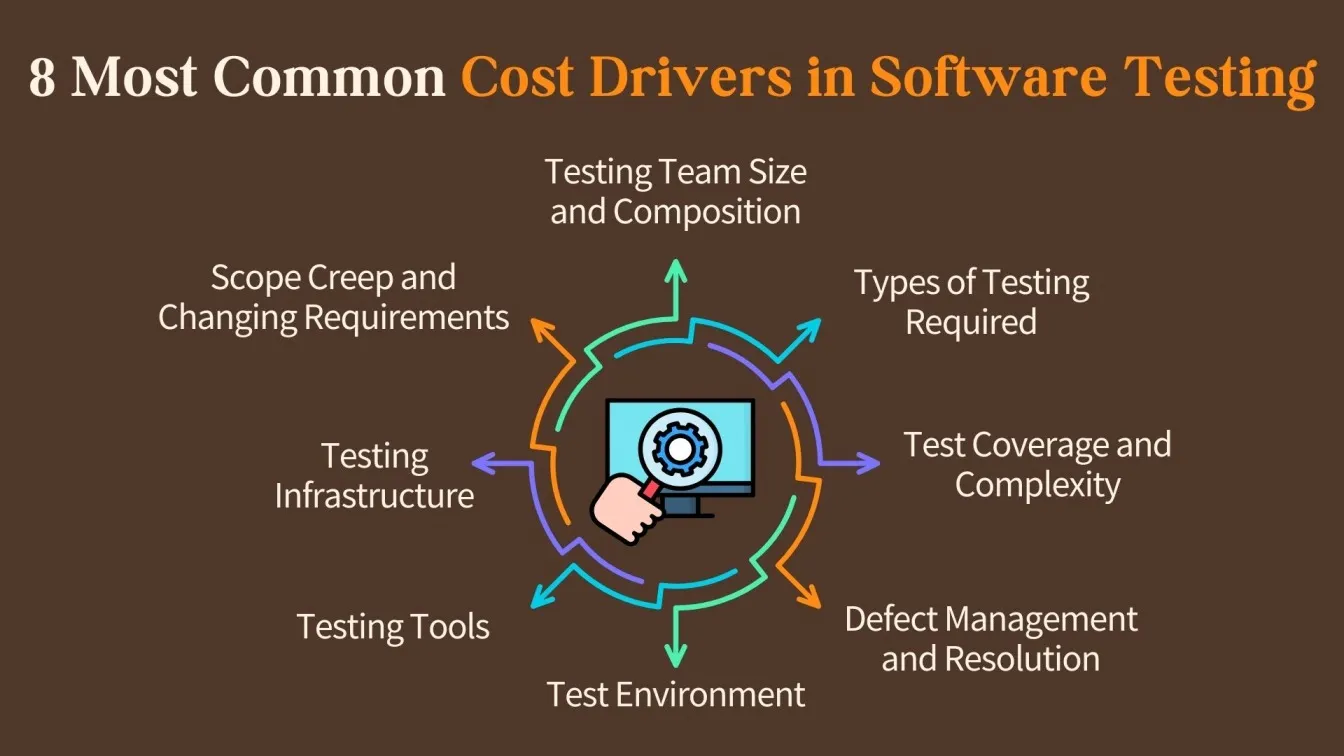
Comparing Freelance Testers and Outsourced QA Teams: For many organizations, choosing between freelance software testers and an outsourced team comes down to the specifics of the project. Freelance work offers flexibility and can be a cost-effective solution for short-term or specialized tasks. However, for large-scale projects that demand a coordinated effort, partnering with established software testing companies or using Software Testing Services may be the better option. Each approach comes with its advantages in terms of technical skills, scalability, and the ability to handle time zone differences.
Return on Investment (ROI): Investing in comprehensive quality assurance services pays off by reducing the risk of costly post-release failures. Although tools such as advanced software testing tools and automation tools require an upfront investment, the long-term benefits of improved software quality and enhanced user satisfaction contribute significantly to project success. Effective budgeting ensures that your development process remains streamlined, maximizing both efficiency and ROI.
Automated Testing Tools for Software Testing
Automation is reshaping the landscape of software testing by offering consistent, repeatable tests that significantly cut down on valuable time and reduce human error.
Key Benefits of Automated Testing
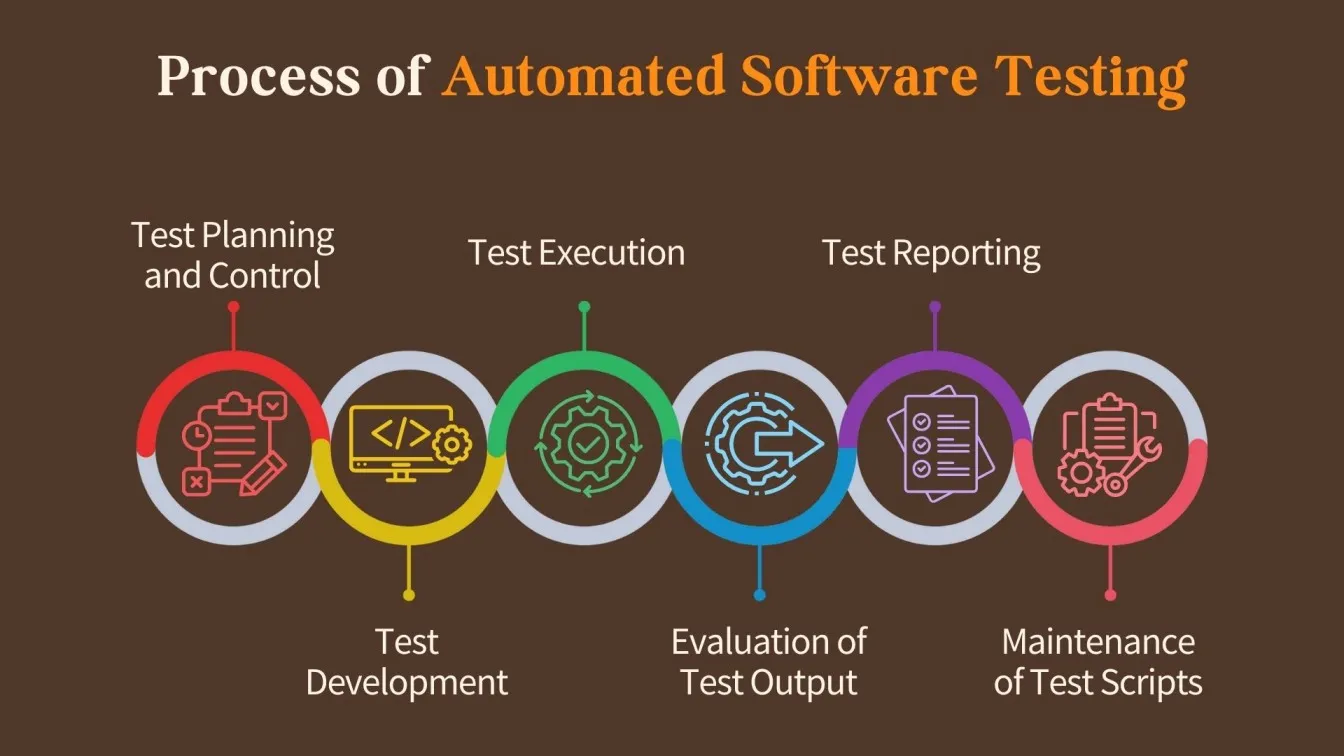
- Increased Efficiency: Automated tests run continuously, accelerating the development process and generating detailed reports and bug reports without manual intervention.
- Enhanced Coverage: By leveraging automation tools and even ai in software testing, organizations can cover a wide range of types of software testing—from regression testing to load testing across multiple operating systems.
- Cost-Effective: While the initial investment in software testing tools may be high, the long-term savings and prevention of hidden costs make automation a cost-effective strategy for ensuring software quality.
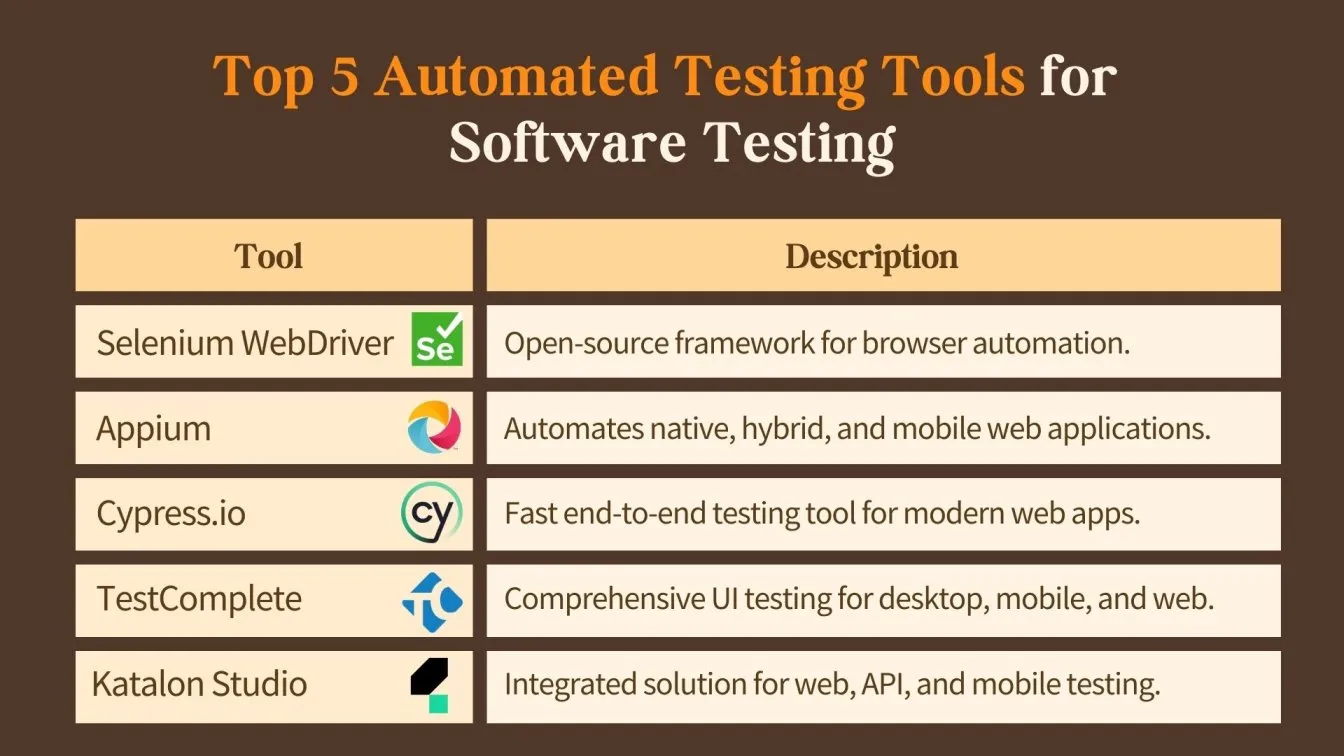
Popular Automation Tools: Tools like Selenium, Playwright, Appium, and TestComplete have become staples in the testing arsenal of many quality assurance testers. Their ability to integrate seamlessly with CI/CD pipelines ensures that every release is validated quickly and efficiently, setting the stage for continuous improvement in software quality.
Manual Testing Tools for Software Testing
Despite the advancements in automation, manual testing remains a vital part of any quality assurance strategy. It is particularly useful for evaluating user interfaces and conducting acceptance testing that requires a human touch.
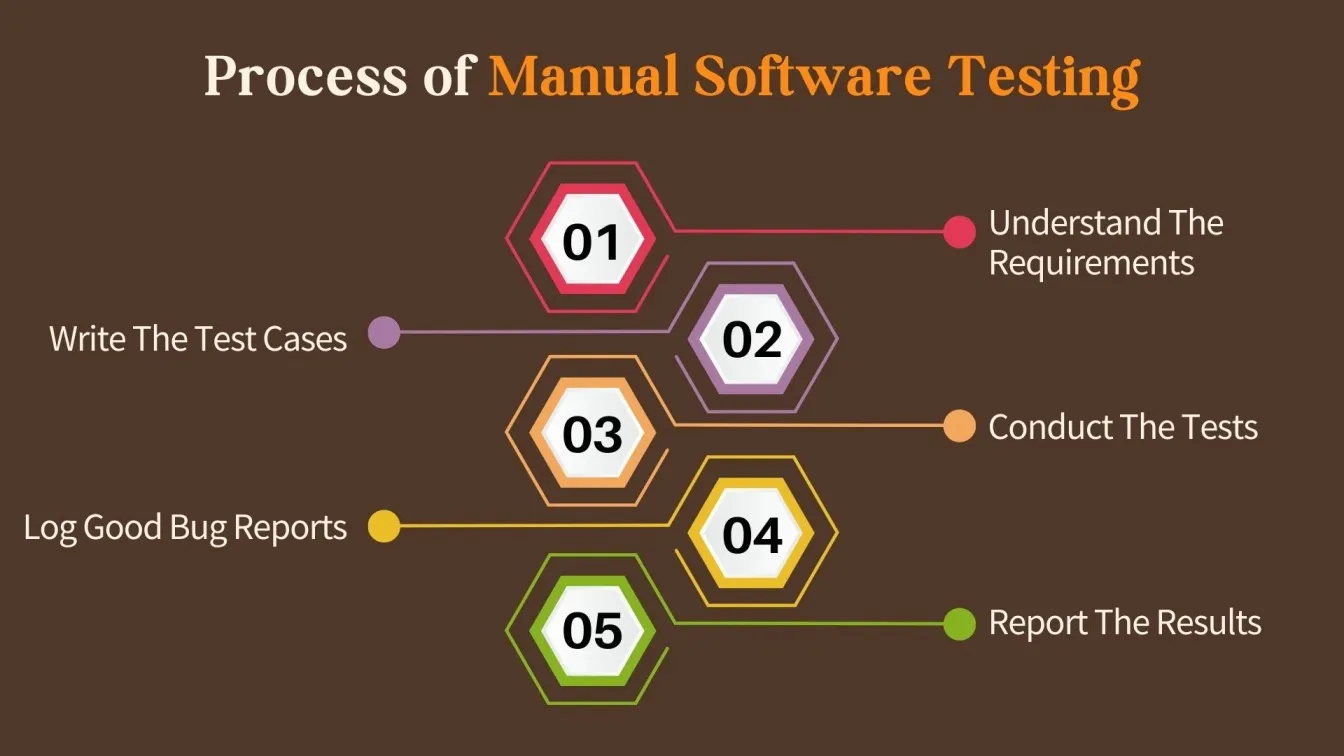
Advantages of Manual Testing
- Flexibility: Manual testing enables testers to explore and interact with software in ways that automated tests might overlook. This approach is key for assessing user satisfaction and the overall experience of application testing.
- Real-World Simulation: Manual testers simulate actual usage scenarios, providing insights that automated scripts cannot capture. This is especially important for Mobile Testing and verifying the effectiveness of quality assurance services.
- Immediate Adaptability: When rapid changes occur during the software development lifecycle, manual testing can quickly adapt, ensuring that new features are rigorously evaluated without the delays associated with script updates.
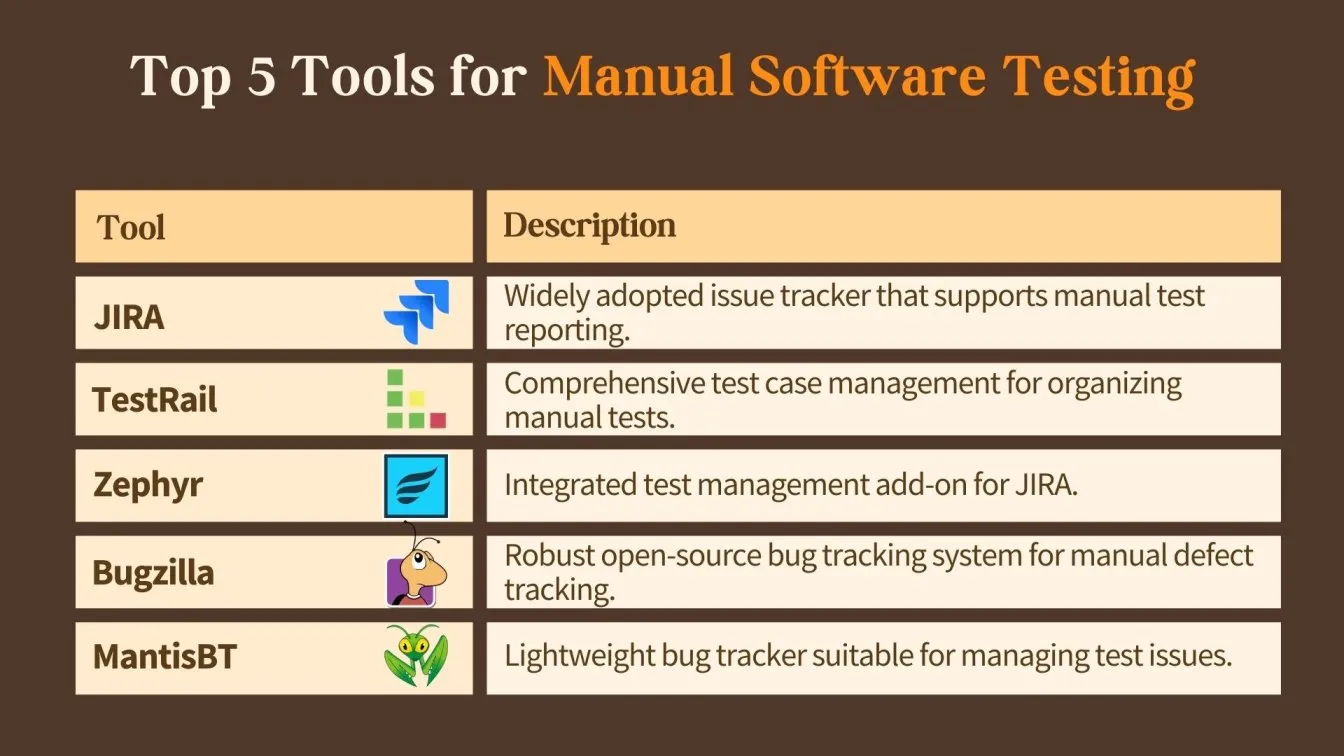
Tools Enhancing Manual Testing: Platforms like JIRA for managing bug reports and TestRail for maintaining test cases are essential. These tools, combined with robust quality assurance services, help in creating detailed reports that inform improvements across every phase of the development process.
API Testing Tools for Software Testing
APIs are the connective tissue of modern software, enabling various components and complex systems to interact seamlessly. Testing APIs is therefore crucial for maintaining software quality and ensuring that data flows securely between systems.

Importance of API Testing: API testing validates the interactions between different software modules, ensuring that integrations work smoothly. As companies increasingly adopt ai in software testing and advanced automation tools, the ability to test APIs rigorously has become a cornerstone of modern quality assurance strategies.
Leading API Testing Tools: Tools such as Postman, SoapUI, and REST Assured are widely used for their robust features and ease of integration into the software development lifecycle. These software testing tools are indispensable for conducting thorough API testing and ensuring that every integration maintains a high standard of software quality.
Industry-Specific Regulations for Software Testing
Compliance with industry-specific regulations is non-negotiable, especially for organizations operating in sensitive sectors. Whether you’re a healthcare provider or a financial institution, your software development companies must adhere to strict security measures and quality assurance services to ensure that your products remain compliant.
Navigating Compliance
- Healthcare: Compliance with HIPAA and other privacy regulations is essential for any software development lifecycle in the healthcare sector. Rigorous quality assurance and software testing help safeguard patient data while maintaining user-friendly user interfaces.
- Finance: Financial institutions must meet requirements such as SOX and PCI-DSS, necessitating intensive load testing, acceptance testing, and comprehensive quality assurance services.
- Government: Projects in the public sector require adherence to strict security measures and accessibility standards, ensuring that every software product is both robust and secure.
Pros and Cons of In-House Software Testing Team Development
Building an in-house QA team has been a traditional approach for many organizations. This model offers direct oversight and deeper integration with the development process, but it also brings challenges that can impact overall software quality and project success.
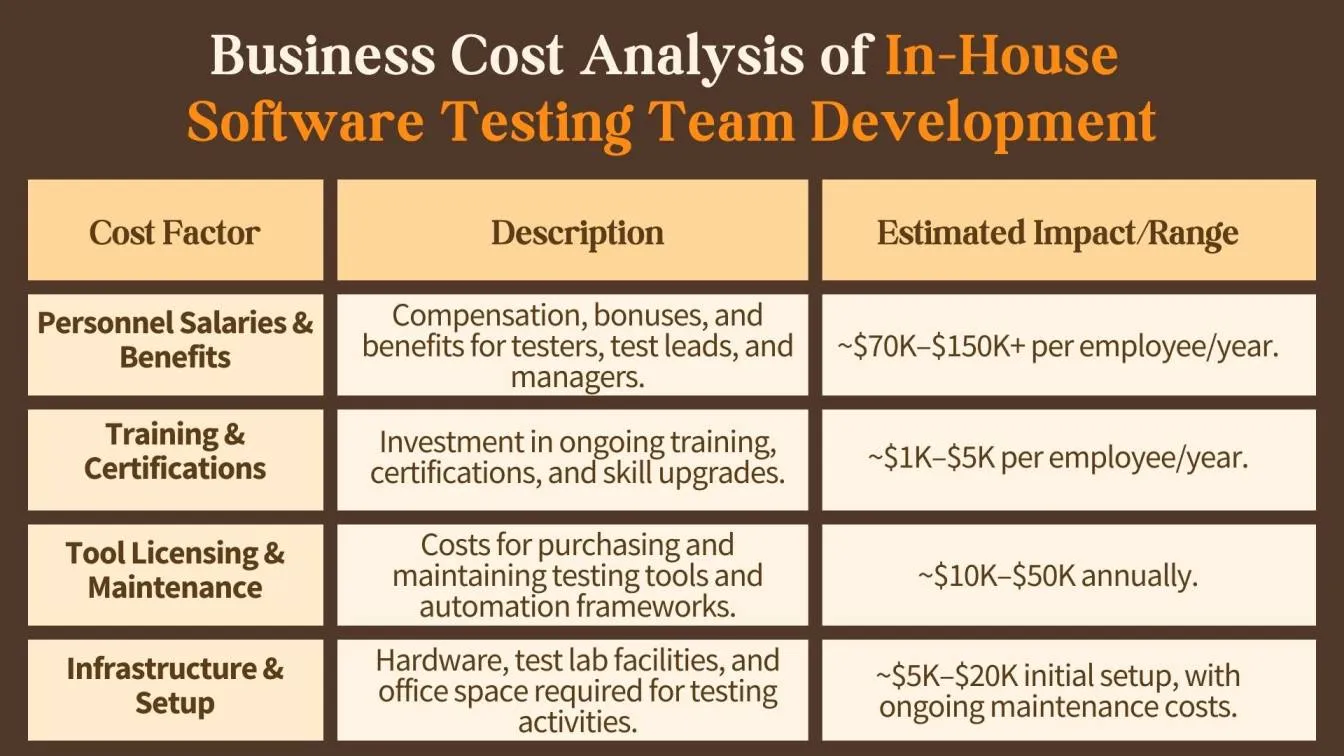
Advantages of an In-House QA Team
- Direct Oversight: Having a dedicated team facilitates immediate feedback and seamless integration with the development team, resulting in a streamlined development process.
- Tailored Testing Strategies: In-house teams can craft customized testing strategies that align closely with the company’s specific project scope and quality assurance standards.
- Enhanced Security: Maintaining quality assurance services internally ensures that sensitive data and proprietary processes remain secure.
Challenges of an In-House QA Team
- Higher Costs and Hidden Costs: Recruiting and retaining a team of skilled quality assurance testers can lead to significant expenditures, including extra cost and potential hidden costs that impact the overall budget.
- Limited Flexibility: In-house teams may find it challenging to scale quickly, especially when working on long-term projects or managing time zone differences during global collaborations.
- Resource Intensive: Continuous investment in training and software testing tools is necessary to keep the in-house team at the cutting edge of software quality.
Pros and Cons of Outsourcing Software Testing
Outsourcing software testing has become an increasingly popular alternative, especially for companies looking to reduce overhead and access specialized expertise without incurring the full costs of an internal team.
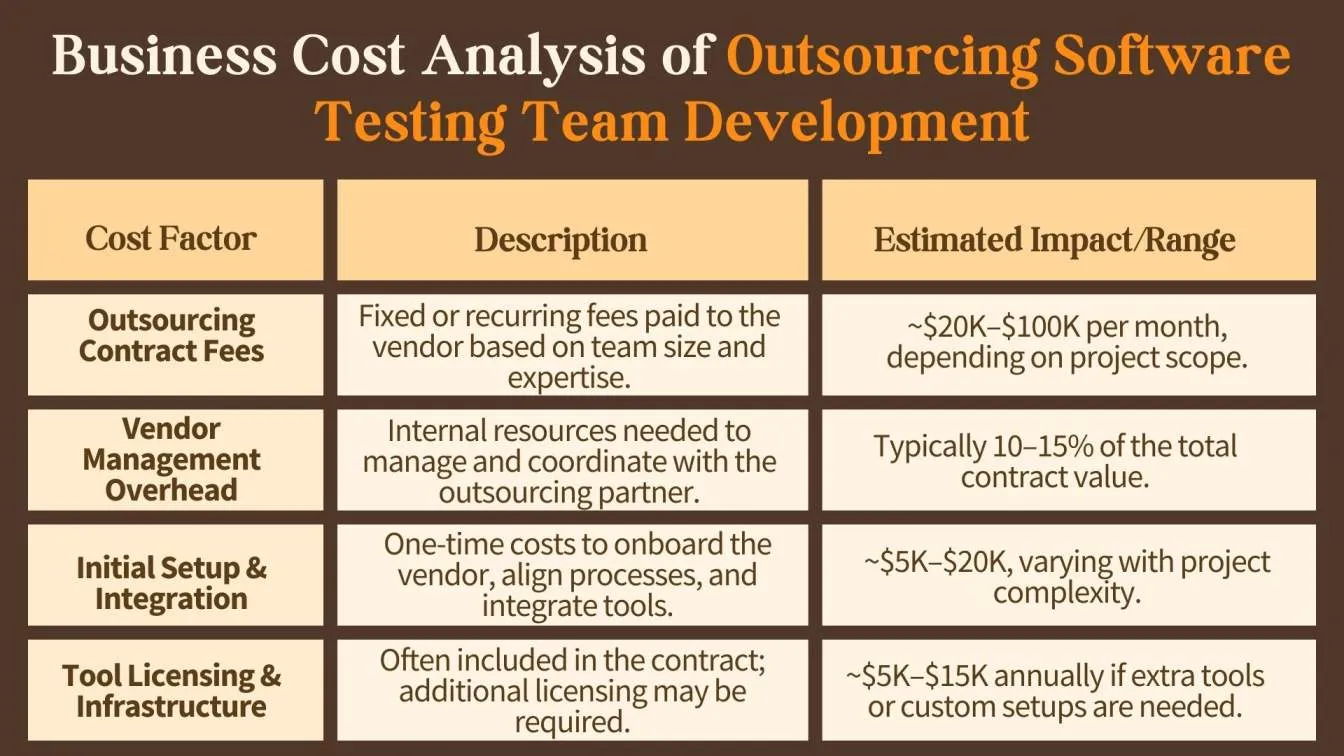
Advantages of Outsourcing
- Cost-Effectiveness: Outsourcing offers a practical solution to avoid extra cost associated with a permanent in-house team, mitigating hidden costs while ensuring high software quality.
- Access to Specialized Expertise: By partnering with reputable software testing companies, organizations gain access to professionals with advanced technical skills, including expertise in ai software testing, load testing, and various types of software testing.
- Scalability and Flexibility: An outsourced team can easily adjust to varying project demands and manage time zone differences effectively, ensuring that the development process remains uninterrupted and efficient.
- Faster Time-to-Market: With a focus on generating detailed reports and efficient bug reports, outsourcing can accelerate release cycles, contributing directly to project success.
Challenges of Outsourcing
- Communication Barriers: Collaborating with external teams sometimes leads to delays due to time zone differences or language issues, potentially impacting the pace of quality assurance services.
- Less Direct Control: Outsourced teams often operate with less oversight, making it harder to ensure that every aspect of the development process meets internal standards.
- Potential Security Risks: Sharing sensitive project information with an external provider requires stringent security measures to maintain software quality.
Why Freelancing Might Be the Better Choice for Software Testing
Freelance work in the realm of software testing offers a unique blend of flexibility, specialized expertise, and cost efficiency. For many projects, especially those requiring rapid turnaround or niche skills, engaging freelance software testers can be the optimal choice.

Benefits of Freelance Testers
- Flexibility: Freelancers are ideal for short-term assignments, ad hoc testing of mobile apps, or urgent bug reports that require immediate attention. They offer the agility that traditional in-house teams may lack.
- Niche Expertise: Many quality assurance testers in the freelance market bring highly specialized technical skills—from acceptance testing to ai in software testing—which can be crucial for ensuring software quality in specific areas.
- Cost-Effective Engagement: Engaging in online freelance work minimizes long-term commitments and avoids the hidden costs associated with hiring a full-time, dedicated team.
- Diverse Perspectives: Freelancers, sourced through various freelance websites, offer fresh insights and innovative testing approaches that can enhance the overall quality of software testing services.
Conclusion: Choosing the Ideal Method for Software Testing
The decision between using freelance testers and an outsourced team ultimately depends on your organization’s specific needs, budget, and overall project scope. In today’s competitive market, maintaining high software quality is non-negotiable—whether you rely on a quality assurance engineer, a quality assurance analyst, or a robust external provider of quality assurance services.

For organizations that value flexibility, niche expertise, and rapid response, freelance testers offer an attractive solution for enhancing software testing practices without incurring excessive extra cost. On the other hand, for projects that demand comprehensive and scalable solutions, partnering with established software testing companies and leveraging dedicated Software Testing Services may be the best route to ensure continuous quality assurance and project success.
By carefully evaluating the trade-offs between in-house development, freelance talent, and outsourced QA teams, organizations can create a balanced strategy that integrates software testing tools, ai in software testing, and innovative quality assurance methodologies. This approach not only supports robust development processes but also maximizes user satisfaction and ensures that every software release meets the highest standards of quality.
People Also Ask
What is quality assurance in software testing?
Quality assurance (QA) involves the systematic processes and procedures used to ensure that software products meet established quality assurance services and standards.
What is freelance work in the context of software testing?
Freelance work refers to independent contracting where software testers or quality assurance engineers work on a project-by-project basis. This model is highly flexible, allowing companies to tap into online freelance work through various freelance websites for specific testing tasks.
How does quality assurance differ from quality control?
Quality assurance is a proactive process focused on preventing defects through robust quality assurance services and continuous improvement, while quality control is a reactive process aimed at identifying and correcting defects in the final product.
What role does a quality assurance engineer play in software development?
A quality assurance engineer designs and implements processes that ensure high code quality and software quality throughout the software development lifecycle.
What is AI in software testing?
AI in software testing refers to the application of artificial intelligence and machine learning algorithms to automate complex test scenarios, analyze bug reports, predict potential defects, and optimize test coverage.
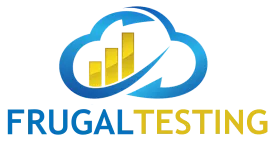


.webp)

%201.webp)

